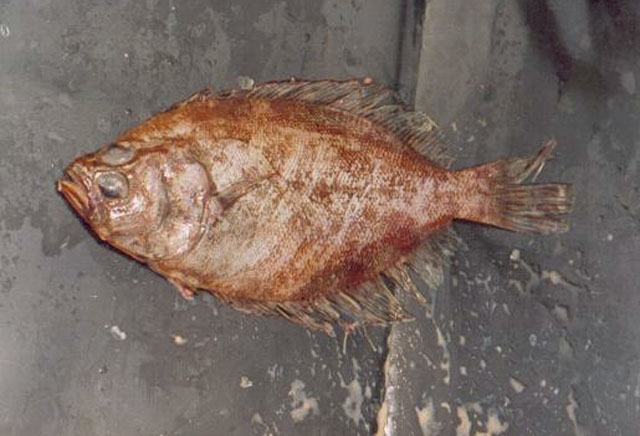| Paralichthyidae (Large-tooth flounders) |
|
|
demersal; marine; depth range 35 - 600 m |
| Eastern Pacific: distribution is not precisely known; but may extend from Mazatlán, Mexico to Chile. |
|
Dorsal spines (total): 0-0; Dorsal soft rays (total): 64-73; Anal spines: 0-0; Anal soft rays: 52-58. Pectoral fins rather small, about 2 times in head in ocular side and about 2.5 times in head on blind side. Pelvic fin on ocular side slightly larger than on blind side. Caudal fin round. Body brownish, with obscure darker spots on body and fins (Ref. 27363). |
| This species inhabits soft bottoms (Ref. 9330); from the littoral zone (35 m, shallowest depth reported in Ref. 9330) up to 600 m (Yañez and Barbieri, 1974.in Ref. 82251:833). Common depth range was taken from a study done in northern Chile. Stomach contents include mainly the squat lobsters (Pleuroncodes monodon and Cervimunida johni) and the deep-sea shrimp (Heterocarpus reedi) (Ref. 82251). Exploited on a local level with trawl nets and is utilized fresh or as fishmeal. |
|
Least Concern (LC); Date assessed: 12 February 2021 Ref. (130435)
|
| harmless |
Source and more info: www.fishbase.org. For personal, classroom, and other internal use only. Not for publication.

